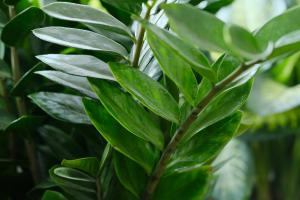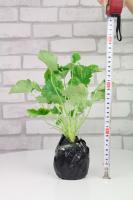Are LED Lights Good for Plants?
LED lights have been gaining in popularity as a way to grow plants indoors. But are they really a good choice? Let's take a look at the pros and cons of using LED lights for plant growth.
The Pros of LED Lights for Plants
LED lights are a great choice for plants because they provide a full spectrum of light that can be customized to the needs of the specific plant. Unlike other light sources, LED lights don't produce heat, so they can be placed closer to the plants without risk of burning them. They're also energy-efficient and long-lasting, so they're a cost-effective choice in the long run.
Another advantage of LED lights for plants is that they can be tailored to match the specific wavelengths of light that plants need for photosynthesis. That means that growers can create a custom light spectrum that matches the specific requirements of their plants. This can result in faster growth and better yields than using natural lighting alone.
The Cons of LED Lights for Plants
One of the disadvantages of using LED lights for plants is that they can be more expensive upfront than other lighting options. Additionally, not all LED lights are created equal, and some may not provide the full spectrum of light that plants need for optimal growth.
Another potential issue with LED lights for plants is that they can disrupt natural growth patterns. Plants have evolved to grow in response to natural sunlight, and LED lights may not match the intensity, duration, or wavelength of light that plants are used to. This can result in stunted growth or abnormal development in some plants.
How to Use LED Lights for Plants
If you're thinking of using LED lights to grow plants, there are a few things to keep in mind. First, make sure to choose high-quality LED lights that provide a full spectrum of light. Look for lights that have a mix of blue, red, and white light, as these wavelengths are essential for plant growth.
Next, determine the specific needs of your plants and customize the light spectrum accordingly. Different plants have different requirements for light intensity, duration, and wavelength, so be sure to research the specific needs of your plants and adjust the lighting accordingly.
Finally, make sure to place the LED lights at the appropriate distance from the plants. LED lights don't produce heat, so they can be placed closer to the plants than other types of light. However, the intensity of the light can still be too strong if it's placed too close, so be sure to experiment with different distances until you find the sweet spot that works for your plants.
Conclusion
Overall, LED lights can be a great choice for growing plants indoors, as long as they're used correctly. By choosing high-quality lights, customizing the light spectrum, and adjusting the placement of the lights, indoor growers can create ideal growing conditions that result in healthy, thriving plants.

 how many times do yo...
how many times do yo... how many planted tre...
how many planted tre... how many pine trees ...
how many pine trees ... how many pecan trees...
how many pecan trees... how many plants comp...
how many plants comp... how many plants can ...
how many plants can ... how many plants and ...
how many plants and ... how many pepper plan...
how many pepper plan...






























